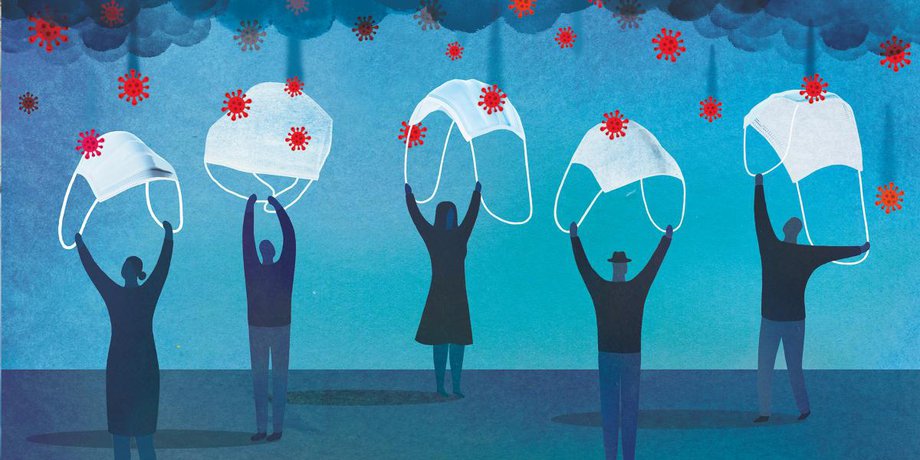Why Respiratory Hygiene Is Essential in Preventing Airborne Viruses

Respiratory hygiene plays a crucial role in preventing the transmission of airborne viruses. Understanding the mechanisms of airborne virus transmission and implementing proper respiratory hygiene practices are essential for effective virus prevention.
This article aims to explore the significance of respiratory hygiene, including the use of masks and hand hygiene, in mitigating the spread of airborne viruses. Additionally, environmental factors and the implementation of respiratory hygiene measures in public settings will be discussed.
The information provided will contribute to enhancing public health strategies and reducing the risk of respiratory viral infections.
Key Takeaways
- Respiratory hygiene plays a crucial role in preventing the transmission of airborne viruses.
- Good respiratory hygiene, including the proper disposal of used tissues and hand hygiene, can significantly reduce the risk of spreading the virus.
- Airborne transmission of viruses occurs through respiratory droplets that can remain suspended in the air, especially in close contact, poorly ventilated, and crowded environments.
- The use of masks with a good fit and seal, as well as practicing proper coughing etiquette by covering the mouth and nose with a tissue or elbow, are important measures in preventing the spread of airborne viruses.
The Importance of Respiratory Hygiene in Virus Prevention
Respiratory hygiene plays a crucial role in preventing the transmission of airborne viruses. The importance of respiratory hygiene in virus prevention cannot be overstated.
When an infected person coughs or sneezes, respiratory droplets containing the virus can be released into the air. These droplets can then be inhaled by others nearby, leading to the spread of the virus.
By practicing good respiratory hygiene, such as covering the mouth and nose with a tissue or elbow when coughing or sneezing, individuals can significantly reduce the risk of spreading the virus to others.
Additionally, proper disposal of used tissues and regular hand hygiene further contribute to virus prevention. These simple yet effective measures are essential in controlling the spread of airborne viruses and protecting public health.
Understanding Airborne Transmission of Viruses
Airborne transmission of pathogens is a significant mode of disease spread. Understanding the risks associated with airborne transmission and the dispersion of respiratory droplets is crucial in preventing the spread of airborne viruses. Respiratory droplets, which are small liquid particles expelled when an infected person coughs, sneezes, or talks, can contain infectious pathogens. These droplets can vary in size, with larger droplets falling to the ground quickly and smaller droplets remaining suspended in the air for longer periods. The table below summarizes the risks associated with airborne transmission and the dispersion of respiratory droplets.
| Airborne Transmission Risks | Respiratory Droplets Dispersion |
|---|---|
| Close contact with infected individuals | Coughing and sneezing without covering mouth and nose |
| Poor ventilation in indoor spaces | Talking loudly or shouting |
| Crowded environments | Singing or activities that generate aerosols |
| Lack of personal protective measures | Medical procedures that produce aerosols |
| Inadequate respiratory hygiene |
Common Practices for Maintaining Respiratory Hygiene
This discussion will focus on two important aspects of maintaining respiratory hygiene: mask effectiveness and comfort, and proper coughing etiquette.
The effectiveness of masks in preventing the transmission of respiratory viruses has been a topic of debate, and understanding the factors that contribute to their effectiveness is crucial. Additionally, ensuring that individuals are comfortable while wearing masks is necessary to promote their consistent use.
Furthermore, the discussion will cover the proper techniques for coughing to minimize the spread of respiratory droplets and prevent the transmission of viruses.
Mask Effectiveness and Comfort
One important aspect to consider when evaluating the effectiveness and comfort of masks is the material used in their construction. Different materials offer varying levels of filtration and breathability, which directly impact both the effectiveness and comfort of the mask.
To further understand the relationship between mask effectiveness and comfort, it is important to consider the following:
- Filtration efficiency: Masks made from materials with higher filtration efficiency, such as N95 respirators, are more effective in filtering out airborne particles, including viruses. However, these masks may be less comfortable due to their tight fit and restricted airflow.
- Breathability: Masks that are highly breathable, such as those made from cotton or polyester blends, offer greater comfort but may have lower filtration efficiency. Balancing breathability and filtration is crucial to ensure both effectiveness and comfort.
- Fit and seal: A well-fitting mask with a proper seal provides better protection and comfort. Masks with adjustable nose bridges and ear loops can enhance fit and seal, ensuring a snug yet comfortable fit.
- Skin sensitivity: Some materials, such as latex or certain synthetic fabrics, may cause skin irritation or allergies in some individuals. Considering individual sensitivities is essential to maximize both effectiveness and comfort.
Proper Coughing Etiquette
Coughing etiquette plays a crucial role in minimizing the spread of respiratory droplets and potential transmission of infectious agents. Proper coughing technique is essential in reducing respiratory droplets released into the surrounding environment. The following table presents a comparison of different coughing techniques and their effectiveness in reducing respiratory droplets:
| Coughing Technique | Description | Effectiveness |
|---|---|---|
| Covering mouth and nose with tissue or elbow | Using a tissue or the elbow to cover the mouth and nose during a cough | Highly effective in reducing respiratory droplets |
| Coughing into hands | Coughing directly into the hands | Least effective in reducing respiratory droplets |
| Not covering mouth and nose | Coughing without any coverage | Highly ineffective in reducing respiratory droplets |
Implementing proper coughing etiquette, such as using a tissue or elbow to cover the mouth and nose, can significantly reduce the release of respiratory droplets and minimize the potential transmission of infectious agents.
The Role of Masks in Preventing Airborne Virus Spread
Masks play a crucial role in preventing the spread of airborne viruses by providing a physical barrier that filters out respiratory droplets. There are different types of masks available, including surgical masks, N95 respirators, and cloth masks.
Surgical masks are commonly used in healthcare settings and are designed to protect both the wearer and those around them. N95 respirators provide a higher level of protection and are recommended for healthcare workers or individuals in high-risk environments.
Cloth masks, on the other hand, are a more accessible option for the general public and can be made from various materials. It is important to follow mask usage guidelines, such as ensuring a proper fit, covering both the nose and mouth, and avoiding touching the mask or face while wearing it.
Regular mask-washing or replacement is also necessary to maintain effectiveness.
Proper Hand Hygiene to Complement Respiratory Hygiene
Respiratory hygiene, including wearing masks, plays a crucial role in preventing the spread of airborne viruses.
However, it is important to note that proper hand hygiene is equally essential in complementing respiratory hygiene practices. Handwashing techniques are effective in reducing the transmission of respiratory viruses by removing pathogens from the hands.
Respiratory hygiene education should include information on the correct handwashing methods, such as using soap and water for at least 20 seconds and covering all surfaces of the hands.
It is also important to educate individuals on the importance of hand hygiene before and after touching the face, especially the nose and mouth areas.
Environmental Factors and Respiratory Hygiene
Environmental factors, such as air quality and ventilation, can significantly impact the effectiveness of hygiene practices in reducing the transmission of infectious diseases. The following list highlights the emotional impact of these factors on respiratory health:
- Poor air quality: High levels of air pollution can compromise respiratory health, making individuals more susceptible to respiratory infections and reducing the effectiveness of respiratory hygiene practices.
- Inadequate ventilation: Insufficient airflow and ventilation in indoor spaces can lead to the accumulation of airborne pathogens, increasing the risk of transmission. This can undermine the efforts of individuals to maintain proper respiratory hygiene.
- Contaminated surfaces: Environmental surfaces can serve as reservoirs for infectious agents, including respiratory viruses. If these surfaces are not properly cleaned and disinfected, they can contribute to the spread of respiratory infections despite individuals’ adherence to respiratory hygiene practices.
Understanding and addressing the environmental impact on respiratory health is crucial for effective prevention and control of airborne viruses.
Implementing Respiratory Hygiene Measures in Public Settings
Respiratory hygiene measures are crucial in preventing the transmission of airborne viruses in public settings. However, implementing these measures can present challenges and may be influenced by the public perception of respiratory hygiene. Some of the challenges include lack of awareness, compliance, and resources. Public perception of respiratory hygiene can vary, with some individuals being more receptive to these measures than others. To evoke an emotional response in the audience, a 3 column and 3 row table can be used to compare the different perceptions and attitudes towards respiratory hygiene. This table can provide a visual representation of the various opinions and emotions associated with respiratory hygiene, helping to highlight the importance of addressing these challenges and improving public perception for effective implementation.
| Attitude towards Respiratory Hygiene | Emotions | Perceived Importance |
|---|---|---|
| Positive | Confidence | High |
| Neutral | Indifference | Moderate |
| Negative | Fear | Low |
Frequently Asked Questions
What Is the Difference Between Respiratory Hygiene and Hand Hygiene in Preventing the Spread of Airborne Viruses?
Respiratory hygiene and hand hygiene are both important in preventing the spread of airborne viruses. However, respiratory hygiene focuses on measures such as covering the mouth and nose when coughing or sneezing, while hand hygiene involves washing hands to reduce the transmission of viruses. The effectiveness of respiratory hygiene lies in the ability to minimize the release of respiratory droplets containing viruses into the air.
Can Respiratory Hygiene Alone Prevent the Transmission of All Airborne Viruses?
Respiratory hygiene is effective in reducing the transmission of certain airborne viruses, but it has limitations. It may not be sufficient to prevent the transmission of all airborne viruses, as other factors such as environmental conditions and individual behaviors also play a role.
Are There Any Specific Environmental Factors That Can Hinder the Effectiveness of Respiratory Hygiene Measures?
Environmental factors can hinder the effectiveness of respiratory hygiene measures. These factors may include poor ventilation, crowded spaces, and contaminated surfaces. Understanding and addressing these factors is crucial in preventing the transmission of airborne viruses.
How Can Individuals Ensure That They Are Practicing Proper Respiratory Hygiene in Public Settings?
To ensure proper respiratory hygiene in public settings, individuals can follow certain strategies. These strategies include covering the mouth and nose when coughing or sneezing, using tissues or elbows, disposing of tissues properly, and regularly washing hands. These practices can help prevent the spread of respiratory infections.
Is Wearing a Mask Necessary if Proper Respiratory Hygiene Practices Are Followed?
The necessity of wearing a mask in public settings, despite practicing proper respiratory hygiene, is a topic of discussion. Mask effectiveness in preventing the transmission of airborne viruses and alternative prevention methods are considered.









